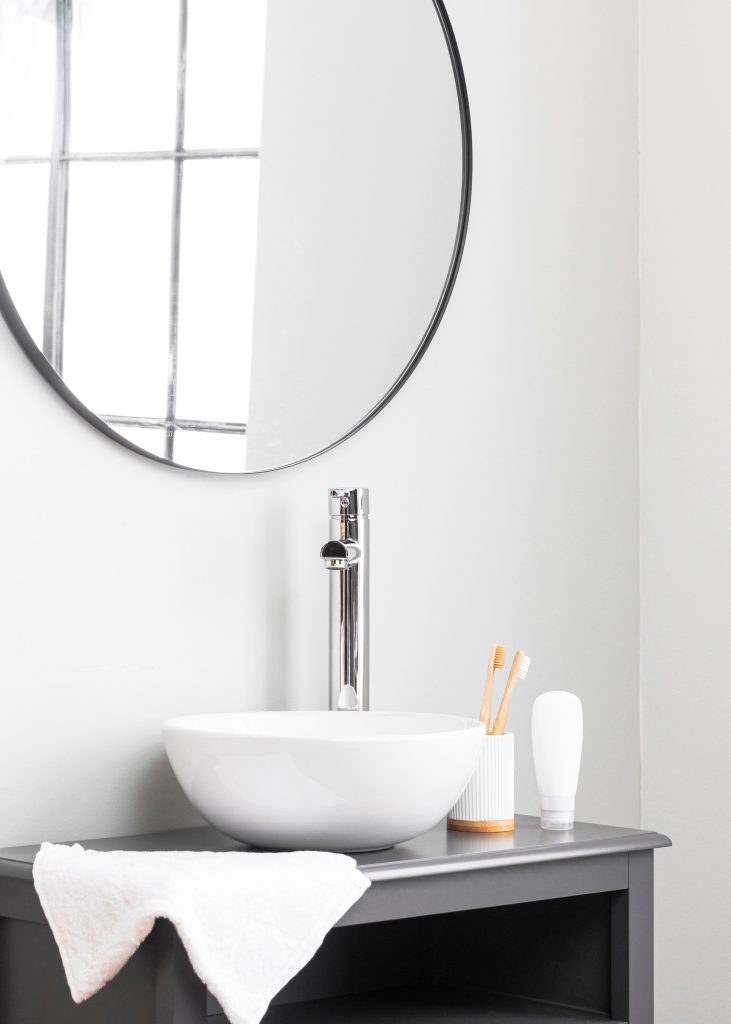Choosing a bathroom sink faucet can either be out of necessity or a personal taste. Whichever side you’re on, here’s a guide to help you choose the one for you.
Table of Contents
ToggleFactors to Consider in Choosing a Bathroom Sink Faucet

Bathroom Sink Faucet Material Type
Brass
Brass is a low-friction and non-ferrous metal that can be easily machined or drilled.
It is an excellent choice for bathroom fixtures when it comes to durability and contains antibacterial properties.
This faucet material is more resistant to corrosion, especially if exposed to hard water.
Bronze
Bronze-made bathroom sink faucets make everything look elegant and sophisticated.
Not only do bronze faucets look stylish, but they are also the durable kind.
As bronze faucets age, you’ll notice the patina or natural discoloration of the metal surface, developing a greenish or brownish color and pattern.
This characteristic is loved by many homeowners.
Brushed nickel
Brushed nickel bathroom faucets have a matte finish.
It has a subtle texture similar to satin nickel, which gives your bathroom faucet a unique look.
Not only that, brushed nickel is also a great material in terms of durability and resistance to tarnishing and corrosion.
Plus, it gives a modern and stylish vibe to your bathroom.
Chrome
Chrome is a type of material that has a shiny and reflective finish.
It is easy to clean and maintain and is also very durable and resistant to tarnishing and corrosion.
Stainless steel
Stainless steel is one of the most popular faucet materials because of its durability.
Its chromium layer adds protection to the faucet surface, making it resistant to corrosion, tarnishing, or rusting.
This material is also very easy to clean and maintain and is hygienic, too.
Bathroom Faucet Mounting Type
Wall-mounted
Wall-mounted bathroom sink faucets are installed behind the wall to access the pipes, which makes it more difficult and expensive to replace than other types.
However, a wall-mounted faucet frees up space and works best in small areas.
Deck-mounted
Deck-mounted bathroom sink faucets are located on the countertop or the sink ledge. This is the most common type of faucet mount.
Floor-mounted
A floor-mounted bathroom sink faucet is not as popular as the wall-mounted and deck-mounted types. It is often used as a tub filler or paired with a freestanding sink.
Bathroom Sink Faucet Hole Type
Single-hole
Single-hole bathroom sink faucets typically work well with single-handle faucets, combining hot and cold water since the spout and handle go into the same passageway.
Double-hole
A two-hole bathroom sink faucet contains a hole intended for a single-hole faucet while the other one is for the accessory, such as a sprayer or soap dispenser.
Three-hole
Three-hole bathroom sink faucet works with two-handle faucets where the faucet is installed in the middle hole while the two handles are positioned in the outer holes.
Four-hole
Four-hole bathroom sink faucets require one hole for the faucet that is typically located in the middle.
The other two holes are for the handles on each side of the faucet while the fourth hole is for additional features such as soap dispensers or sprayers.
Bathroom Sink Faucet Handle Options
Single-handle
Single-handle bathroom sink faucets are the most widely used type and have a single lever or knob that controls both the water flow and temperature.
Double-handle
Two-handle shower faucets have separate handles for controlling hot and cold water that offer better and more personalized temperature control.
Motion sensor
Touchless bathroom sink faucets operate by a motion sensor. Simply, put your hand under the spout and water comes out. This type of faucet also comes with a handle that allows you to control the water temperature.
Touch-activated
Touch-activated bathroom sink faucets are turned on by simply tapping the spout when using. It also comes with a small handle on the side that controls the temperature level.




